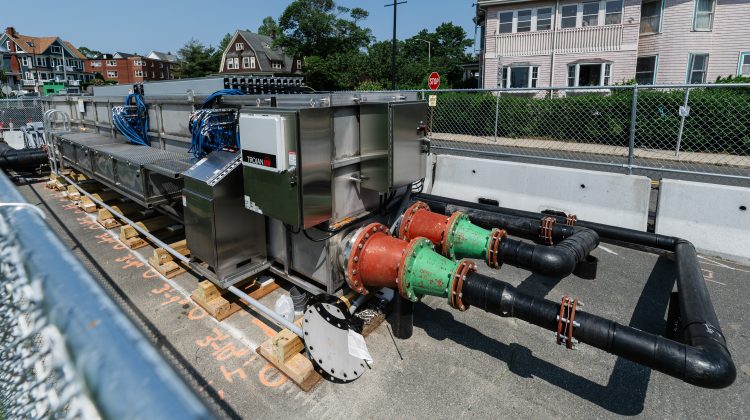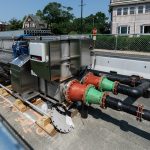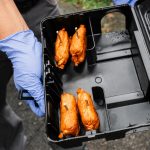The ultraviolet (UV) Pilot Program to reduce bacteria in King’s Beach and Stacey’s Brook was deemed successful in mitigating the issue, according to a report issued by Kleinfelder, the engineering and construction firm responsible for operating the UV system.
Analyzing the number of exceedances of the Mass. Department of Public Health (DPH) threshold for bacteria within ocean beaches — noted as 104 colony-forming units per 100 milliliters of water — it was reported that throughout the span of the pilot (June 20 to Aug. 17), testing at the Swampscott outfall exceeded that threshold of bacteria in only eight days.
In comparison, 2024 saw 33 days where it exceeded the threshold, 2023 saw 43 days, 2022 saw 31 days, and 2021 saw 23 days of exceeding the threshold.
In the report, Kleinfelder noted that “UV effectively treats day-to-day dry weather flows from the Lynn and Swampscott culverts,” and that “the pilot’s objectives were met.”
The DPH obtained the data for the pilot and tested water samples daily across four locations along King’s Beach, with three located on the Lynn side, as well as the mouth of the Swampscott outfall.
Throughout the pilot, it was reported that the UV system was fully offline for six days and partially offline for 14 days due to “weather conditions, maintenance, and operational issues.” Throughout its 53 days of being both fully and partially operational, there were 41 days with dry weather and 12 with wet weather.
It was also noted in the report that “the effectiveness of a UV system is reduced during wet weather events, particularly in the first 24 hours, due to increased turbidity (a measure of the water’s clarity) in the flow.”
Created to operate during both wet and dry weather, minus large rainfall, the pilot treated roughly five million gallons per day, according to the report, with the goal to better understand the effectiveness that UV can have on polluted water in order to make the beaches swimmable for the community.
Another point raised during the report was how the extent of tidal impacts was greater than anticipated, which initially caused the pumps to get clogged with seaweed. Metal screens were then installed to protect the UV equipment from tidal impacts and debris like seaweed, as well as continuous maintenance to remove seaweed from the pumps and UV system.
City of Lynn Mayor Jared C. Nicholson shared his thoughts on the development.
“This gives us solid data to examine collaboratively with Swampscott as we try to identify the most effective and practical method to keep King’s Beach open to the public as often as possible,” Nicholson said. “The results show us that this technology is worth considering as a long-term option for King’s Beach.”
Former Acting Town Administrator Gino Cresta said that “this report is reason for optimism when it comes to a permanent solution for King’s Beach.”
“Our town and Lynn have some work to do in arriving at a long-term strategy, but we now have solid data to inform those discussions,” Cresta said.
State Sen. Brendan Crighton also shared that positive sentiment, where he added that “For the first time, our family — and countless others — could swim safely at King’s Beach,” and that “this success is a testament to the effective UV treatment.”
“As we finalize the report and program results, our continued partnership will allow us to make informed decisions about King’s Beach treatment options, ensuring the beach can be enjoyed for summers to come,” Crighton said.
Lynn Ward 3 City Councilor Coco Alinsug said that “for four years, most of my calls were complaints about King’s Beach,” but now most of his calls are “very positive, with happy residents who are glad that we’re doing something for King’s Beach. I am delighted to learn about this report.”
“King’s Beach is a treasure for Swampscott and Lynn, and it’s encouraging to see data showing a potential solution for keeping it open and safe,” Rep. Jenny Armini said. “The UV pilot is a model of collaboration between communities when it comes to tackling problems that defy borders.”





